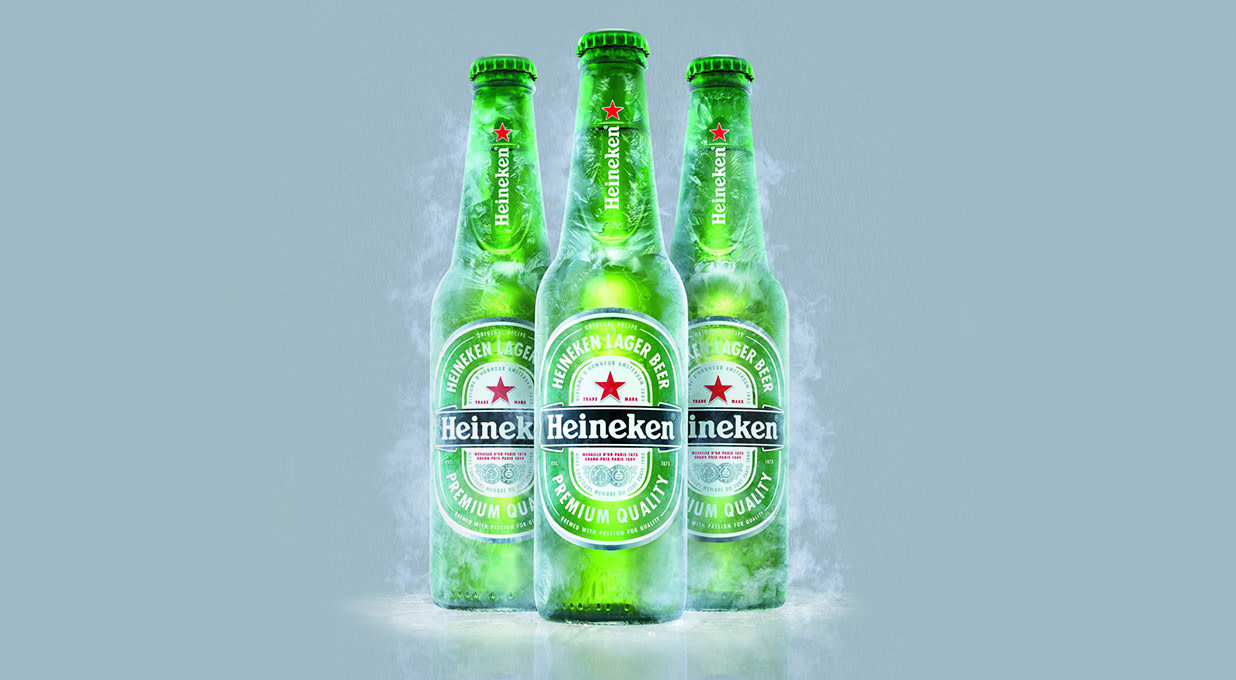Heineken reported underlying net revenue of €6.8bn in the first quarter, up by 9.4% on an organic basis, which was ahead of market expectations. This was driven by a healthy mix of both price and volume growth.
Beer volumes were up by 4.7% on an organic basis, helped by growth across all regions. Premium beer volumes outperformed the wider portfolio, with Heineken volumes growing fastest at 12.9%.
The full-year outlook remains unchanged. Underlying operating profit’s expected to grow at low-to-high single digits, while underlying net profit is set to grow at a slower pace.
The shares were broadly flat following the announcement.
Our view
Heineken’s first-quarter results came in ahead of market expectations on most fronts. After a sustained period of declines, a return to growth in beer volumes was the key takeaway for us. This uplift meant that the rise in revenue this quarter came from a much healthier mix of both price and volume growth.
The group owns high-end favourites such as Heineken, Birra Moretti, Beavertown and many more. The ongoing shift by consumers towards these more premium brands remains strong and should help to boost profitability going forward.
But inflationary cost pressures are likely to remain a thorn in the group’s side in the near term. And the higher interest rate environment has led to a significant rise in financing and interest expenses too.
The Asia Pacific region was the group’s most profitable area last we heard. 2023 saw a sharp sales decline in the region as it wrestled with the effects of an economic slowdown. Comparing to a lower base has helped to flatter first-quarter growth numbers, but still, growth was well ahead of market expectations. We view this area as a key growth driver for Heineken, but would like to see some more concrete signs of the economy picking back up before getting too excited.
Encouragingly, non-alcoholic offerings have continued to show positive momentum. Headlined by the leading Heineken 0.0 brand, the group has a growing portfolio of non-alcoholic beers and ciders, and holds the number-one spot in many of its markets.
The eB2B platform is another shining light. This makes it easier for business customers, like bars and pubs, to order in their selected drinks - while simultaneously cutting out sales reps to improve margins. The platform captured €2.7bn in trading value in the first quarter, a 17% uplift on the prior year.
The ratio of net debt to cash profits was 2.4 times at the last count, just inside management's long-run target of under 2.5 times. We're not concerned at this point, but with higher interest rates pushing up the cost of funding this debt, we'd like to see this ratio move lower in the near future.
All in, it was pleasing to see volumes return to growth. But there’s still plenty of work to do to restore investor confidence. A sustained period of growth in the key Asia Pacific market is needed to help put the wind back in Heineken’s sails. Until more concrete signs of that begin to emerge, we don't see many catalysts for a material uplift in the valuation.
Environmental, social and governance (ESG) risk
The food and beverage industry tends to be medium-risk in terms of ESG though some segments like agriculture, tobacco and spirits fall into the high-risk category. Product governance is a key risk industry-wide, especially in areas with strict quality and safety requirements. Labour relations and supply chain management are also industry-wide risks, with other issues varying by sub-sector.
According to Sustainalytics, Heineken’s management of ESG risks is strong. Heineken aims to reach net zero in scope 1 and 2 emissions, as well as reduce scope 3 emissions by 21% by 2030. Net zero across the entire value chain is expected by 2040. Investors should keep in mind that product consistency and quality is a major selling point for Heineken. Any slip-up on this front could lead to brand damage and the potential to lose market share and revenue.
Heineken key facts
All ratios are sourced from Refinitiv, based on previous day’s closing values. Please remember yields are variable and not a reliable indicator of future income. Keep in mind key figures shouldn’t be looked at on their own – it’s important to understand the big picture.
This article is not advice or a recommendation to buy, sell or hold any investment.No view is given on the present or future value or price of any investment, and investors should form their own view on any proposed investment.This article has not been prepared in accordance with legal requirements designed to promote the independence of investment research and is considered a marketing communication.Non - independent research is not subject to FCA rules prohibiting dealing ahead of research, however HL has put controls in place(including dealing restrictions, physical and information barriers) to manage potential conflicts of interest presented by such dealing.Please see our full non - independent research disclosure for more information.


